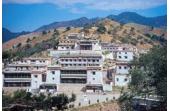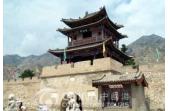Baotou
- Things to do
-
- Photo(22)
- Tips&article(103)
- Make it Happen
- Map
-
loading...
- Other Tours
Top 5 Lists
Located in Western Inner Mongolia, Baotou Prefecture covers an area of 27,768 square kilometers (10718 square miles), with a population of around 2.60 million. A 214-kilometer (133-mile) stretch of the Yellow River runs through the prefecture. Baotou is the largest city in Inner Mongolia, and one of the important industrial bases of the country. The city's name means 'place with deer' in the Mongolian language, hence the city has the nickname "Deer City".
Although Baotou's development as a city is of relatively short history, records of human settlement can be traced back to almost 5,000 years ago. In 1809, it was incorporated as a town, and it became a city in 1953, from which time Baotou has been known for its steel production.
Baotou is rich in ethnic and tourist resources. The best time to visit Baotou is during summer and autumn, when the weather is pleasant, and the grassland is in the best condition. Baotou has a convenient transportation network that links with many major cities in China.
The Mausoleum of Genghis Khan, 185 km (115 miles) south of Baotou City, is the most famous sight. This is a sacred place where Mongolian people gather to commemorate and offer sacrifices to the legendary hero, Genghis Khan, the establisher of the Mongol Empire.
Wudangzhao Lamasery, located 70 km (43.5 miles) northeast of Baotou, is the largest and best-preserved Tibetan Lamasery in Inner Mongolia. Meidaizhao Lamasery is unique in layout, as it is more like a walled city, with temples, royal palaces and city gates. Both are important centers for spreading Tibetan Buddhism in Inner Mongolia, and are of great importance for the study of the history, religion, and arts of Inner Mongolia.
Resonant Sand Bay offers you the unique experience of hearing sand sing! The reason for this natural phenomenon is still a mystery to the world. Muslims can visit and worship at Baotou Great Mosque in the city center.
The best way to experience Mongolian traditional customs is to ride a camel in the vast desert or grassland, visit or live in the Mongolian yurts, drink a bowl of hot milk tea, enjoy a meal of finger mutton, and listen to Mongolian folk songs. All these will get you closer to the life and culture of Mongolian herdsmen.
Tips & articles
|
|
|
forum discussion
|
|
|












